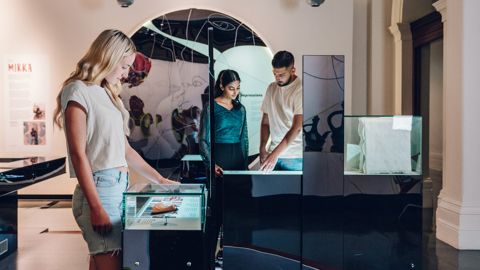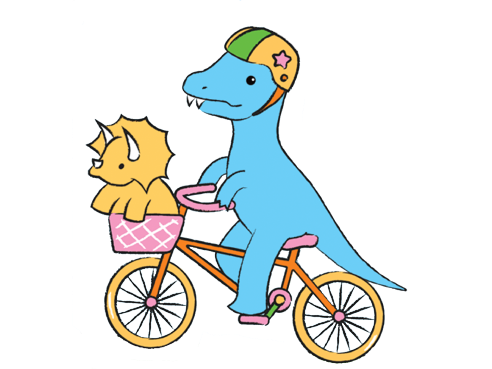Transcript - Marketing and promotion of rare books and special collections: Daniel Wee
Date: 12 July 2019
Speaker: Daniel Wee
Event description: This talk is one of three that were presented under the umbrella ‘Marketing and promotion of rare books and special collections’ for Melbourne Rare Book Week 2019. This talk features Daniel Wee talking about personal branding in the age of social media and his experiences in running @oldbooklibrarian, an Instagram account with 40,000 followers at the time of this presentation. Other related talks include Gemma Steele and Nicole Kearney.
Transcript
Daniel: Hey Everyone, my name is Daniel Wee and I am a rare books librarian working in special collections at Monash University library. As you can probably tell by the title of my talk, I want to give you, I want to discuss how you can use your institutional cultural collections to promote your professional brand. And at the same time nudge the boundaries of decency. A bit of a caveat, the things I’m talking about today are definitely not best practice, they’re purely anecdotal and from my own experience, so you know, anything you want to take on for your own library I would strongly suggest you talk to your supervisors before you go out and do stuff like this. But what I want to do in the next few minutes is to provide you with the tools and skills required to develop an engaging and contemporary personal and professional social media presence. Most of the things I’ll be talking about today were recommended and discussed in a literature review undertaken by Gemma and myself and the primary purpose of this review was to improve our understanding of social media, personal branding, and it’s interconnectedness with libraries and their communication strategies. Having said that, this also applicable to any of the GLAMR areas. What I really want to do with this session is to give you some real world recommendations and tips to boost engagement with your accounts. The primary focus will be on Instagram, however, we do have a Twitter guru in Gemma here, so to please feel free to ask her about that after. Now for those of you who work with or contribute to your institution’s social media or maybe you’re planning to roll out or reinvigorate your institution’s social media strategy, some of you will invariably come up against some form of resistance. This could stem from many things including a lack of understanding of social media by your supervisors, a rigid institution social media policy, or maybe you just don’t have the staff to resource this kind of thing. Personally when I was asked by a previous supervisor to include in text citations and a reference list for my Instagram posts it actually became a bit farcical, so I decided to sort of go out and just do my own thing.
To give you a bit of a background on my account it’s called ‘oldbooklibrarian’, I currently have about over 90 thousand followers and I’m getting about 850 thousand impressions a week, attracting nearly three and a half thousand followers a week and so far I’ve accrued about two million likes over the past two years. The main premise of my account is to curate the weird and wonderful world of books, while also seeking to disrupt innate boundaries that encumber perceptions of high culture. But also demystify what it is librarians do and in particular, special collections librarians, and it’s something that Chris was talking about before. So sort of disrupting, you know, the norm. You probably wouldn’t be surprised then, the number of messages I receive online asking if I am a real librarian. I don’t know if that means they think I’m too cool to be a librarian, but yeah, on the flipside I also know that I have motivated several of my followers to start their own library qualifications because of my account and I.. you know that to me makes it worthwhile. Ah anyway, enough nasal gazing, let’s have a look at some, some of the practicalities, ah no sorry I’ll go back. Yeah, so why should you care about your personal brand? Well, the literature indicates that having a strong personal brand comes up consistently in the literature and is important to social media. Everything you share contributes to an idea of who you are, what you stand for, what your passions are, and what your areas of expertise are. This is your brand. Author Irena Petruca advises that everything you share on social media contributes to your brand, and that everything you share contributes towards an idea of who you are and what you stand for. There are benefits to building your personal brand, and these include leadership opportunities, association with a market niche, greater credibility, recognition and prestige, as well as a higher perceived value. Author Susan Chritton states that “personal brands are also built on authenticity” and something, something I would fundamentally agree with. However, authenticity doesn’t always translate, translate that well into the GLAMR industry. Particularly if you’re in an institution, so if you know you are like me and you’re a sardonic, self-deprecating, contrarian, your world outlook might not always be liked by your colleagues. For me personally an authentic voice, my authentic voice is not always align itself with my institutions. Which I’m sure most of you, you know, would feel that way sometimes. Therefore, it’s important to decide the level of by in that you have with your own library. And whether or not you want to identify as an employee of that institution. That is my take on it, however, the literature suggests that employees are engaged in social media whether or not the organisations they work for recognise or sanction these activities and state that providing employees with tools and training to build valuable collaborative networks and relationships online is in a company’s best interests. And is something that Gemma touched on before with the work that Museums Victoria do in that area. They also suggest measuring which contributors are generating the greatest impact. So look for your influencers in your library and start using them as a model of success to engage other employees.
However, if you look at my profile currently you will notice it is very difficult to identify who I am. But in fact several authors suggest putting concerted effort into authoring your biography, in fact this might be your only chance to catch someone’s attention on social media. At a basic level it suggested that you use the same username, profile picture, and bio information across different platforms. And that you maintain separate accounts on both your personal and your professional. The reason why I don’t have any information on here was in response to… some emails from curators internationally and librarians as well asking how the hell am I getting away with posting this content. It was then that I thought well I should probably start stripping back my affiliation and but having said that they always preface these emails with telling me how great, you know, that they love the account.
So if you’re looking to build a strong personal brand that aligns with your professional brand or institution’s brand, then I recommend taking on, creating a meaningful and clear modus operandi for your profile. So let’s have a look at the types of things I post and discuss what it is that followers engage with at such a high rate. One of the major reasons that my account has been successful is the type of humour that I’ve managed to incorporate in my day to day postings. However, having a sense of humour is very important and it is a really good indicator of authenticity. It’s something that your followers will love and appreciate. However, it is really important to remember that your humour is not going to be to everyone’s taste. As you can probably see here, but you can’t please everyone. Of course there is an incredibly fine line between tasteful and tasteless, so you’ll have to find that happy medium for yourself. Personally I know where the boundary is, but that’s only because I seem to cross it on a regular basis. Discovering your niche is essential to your accounts’ success. As an outsider it is pretty obvious, well for me, I feel it’s pretty obvious when you have multiple contributors to a library’s account. The message tends to be softer around the edges, there is a lack of personality and voice, and once a week you’ll get an annoying post about a cat doing something inane. This is not a niche. Your audience wants to hear what you stand for and what your interests are. And like I said before, you can’t please everyone, believe me you can’t.
As previously discussed, my account is predicated on the concept of sharing weird and wonderful book illustrations and prints. You know and one of these things I try to explain to people is when you take these images out of their original context and you slap them onto Instagram, they immediately have a completely different meaning. And, you know, it’s so nuanced that you hope that people can appreciate the absurdity of some of the things that you see from, you know, the sixteenth century to the nineteenth century. My niche, though, I would admit is probably the shocking. It’s, you know, I put up things like anatomy or history of medicine, memento mori, punishment, historical erotic images, and anything that I will, that my followers ‘what in god’s name am I looking at?’ That being said, I have found my niche, and, you know, I strongly believe with an account with a niche and a strong theme and clear message always do better than those that don’t. This means being consistent and finding your voice. Artist and social media influencer Lori McNee suggests making your last, make sure your last post is valuable. As potential followers will decide whether or not to follow you by your last post. So, what I would recommend is having a look at your collections and ask yourself what are its strengths. What will differentiate you and your library from what is there already. If anyone hasn’t had an opportunity yet, and it sounds like I’m bringing up Gemma all the time, but if you haven’t had a look at the work Gemma’s done on twitter in the last few months, I would strongly suggest you do. She took the decision to segment her social media presence from the professional, ah sorry, from the personal to the professional and I believe that this switch to a single voice and vision has improved engagement with her account and also improved her standing with the library twittersphere. A theme that regularly arose from our literature review is the premise of interactivity, which the natural by-product of engagement. I would argue that interactivity is an absolute necessity for building genuine relationships on social media. It provides you with a conduit to activate your personality, as well as activate your expertise. I would also recommend liking every single comment made on your posts, unless they are of course offensive. I would also recommend, you know, you do get posts from non- English speaking people, they might be international or local. And I strongly recommend answering all of those. Google translate is a wonderful thing and they will understand that, you know, you that it’s not going to be your first language upon reply. Having done that for myself, I’ve been approached by several international magazines and blogs to create content as a guest writer. This leads me onto positioning yourself as an expert in your field and something, that’s something, the literature strongly indicates and recommends. Sharing interesting and accessible facts without pretence is a great way to establish yourself as an authority on a topic; so that is making the topic accessible to everyone, not just librarians and other GLAMR people.
Okay, and don’t be afraid to take risks, but also remember not everyone will like everything you do or say. This particular image here has actually been my most, the most controversial thing I’ve posted up to date. And if you saw the other images and you think that was controversial, this was the most controversial. It is a contemporary reimagining by Leone Ermer of Henri Fuseli’s 1781 masterpiece, ‘The Nightmare’. The incubus has taken on the form, the guise of a MAGA supporter holding a confederate flag and the incubus renders it’s sleeping victim paralysed, and in this case the reimagined the Statue of Liberty. Well, I will tell you now that I was completely shocked at the number of ultra-right wing conservatives I had following me. And they sent me a number of really hate-filled messages both on my post but in my inbox. And in the end I actually decided to take it down because it wasn’t worth the hassle, it was actually affecting my mental health by having all of these people hating on me. However, you know, on the flipside, I received a lot of positive comments from people. But, you know, the whole social media thing is absurd because you can say whatever you want to anyone and, you know, there’s generally no repercussions for that. Question: (What’s the lettering on the hand?) It says Make America Great Again, yeah I thought it was a nice image but not everyone thought that way.
So before we wrap up, I thought I’d give you a few extra little tips to boost engagement on Instagram. Like I said before these aren’t all in the literature review, a lot of them are anecdotal. As I said before, shock. The content design to shock can be divisive but it can also be a really powerful engagement mechanism. For me the power to shock has been what has made my account successful. And I purposely seek out images that are confronting and encourage my followers to comment, share, and direct messages to friends which really boosts engagement. Another thing is to be careful of the number of hashtags you use. This is, so don’t go over thirty and make sure your hashtags are targeted, and also make sure that you put your hashtags in your caption not in your comments. I would also strongly recommend also if you want to go down the Instagram path, is to create a business account. That’s free but it also gives you lots of insights and metrics to help you really start targeting your audience. Try to be, you know, a bit tongue in cheek, don’t be afraid to display your own personality and humour even if people hate it, especially if people hate it. And obviously image is key for Instagram, so don’t be afraid to share and tag other people’s collections if you find an amazing image. Also don’t limit yourself to one format, such as books; you’d be surprised when you share other people’s images and you tag them they love it, because, you know, it promotes their collections as well. And, you know, we’re all in this together I guess. When I look at my top twenty posts, it is awash with nakedness, which is probably no surprise but remember it is a real fine line between sexy and sexual, so use your common sense. If it feels like it pushes the boundaries of decency, reconsider posting it. These are lessons that I learn on a regular basis. For instance, having had a number of posts taken down by Instagram for violating their code of conduct I was recently referred to as what is called ‘shadow banned’ meaning that I had effectively been put in the naughty corner by Facebook. This really affected my engagement rate, and I went from, at one stage there I was on about five thousand followers a week that I was attracting and it went down to about fifty or sixty because no one could see me on there. So be careful. And weird stuff, don’t be afraid to post weird things, it’s something that people, that sometimes the most absurd things are the things that people like the most. And that broadens your audience from just GLAMR people, or just people interested in books, to people who are just interested in weird and wonderful things. Be warned though, success in social media can come at a price and, you know, sometimes I question whether or not what I do with Instagram is actually great for my own personal career path, unless I was going to get into marketing. However, I hope you can take away a few bits and pieces and a few tips and tricks to start thinking about enhancing your social media. And as I said before, don’t be afraid to take risks, but also, and I said before, don’t forget for the most part you also have a duty to your employer. So be aware of where you stand in your institution and what their expectations and policies are.
So that’s it from me, thank you.






